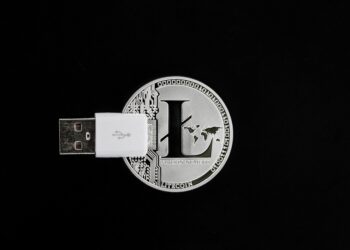Proof of Work (PoW) is a concept that is fundamental to the functioning of many blockchain technologies, including Bitcoin and Ethereum. It is often referenced in discussions about cryptocurrencies, but what exactly is PoW and how does it work?
At its core, PoW is a consensus algorithm used to validate transactions and create new blocks in a blockchain network. In simple terms, it is a way for participants in a network to prove that they have expended a certain amount of computational effort to solve a complex mathematical puzzle before being able to add a new block to the blockchain.
To dive deeper into how PoW works, let’s break down the process step by step:
1. Transaction Verification: When a user sends a transaction on a blockchain network, it is broadcast to all nodes in the network. These nodes then compete to verify the transaction by solving a cryptographic puzzle.
2. Mining: Nodes that are solving the puzzle are known as miners. Miners use their computing power to repeatedly guess a solution to the puzzle, known as a hash, by running the transaction data through a hash function. The goal is to find a hash that satisfies specific criteria, such as having a certain number of leading zeros.
3. Difficulty Level: The difficulty of the puzzle is adjusted automatically by the network to ensure that new blocks are added at a consistent rate. This ensures that blocks are added roughly every 10 minutes in the case of Bitcoin.
4. Proof of Work: Once a miner finds a hash that meets the criteria, they broadcast it to the network as proof of their work. Other nodes in the network can quickly verify the solution by running the same data through the hash function.
5. Block Addition: If the majority of nodes in the network agree that the proof of work is valid, the new block is added to the blockchain, and the miner who successfully solved the puzzle is rewarded with newly minted cryptocurrency and transaction fees.
In essence, PoW is a mechanism that incentivizes participants in a blockchain network to compete to secure and validate transactions. By requiring miners to solve complex puzzles, PoW ensures that adding new blocks to the blockchain is resource-intensive and secure.
However, PoW has come under criticism for its energy-intensive nature and potential environmental impact. The computational power required to mine new blocks has led to concerns about energy consumption and carbon emissions. As a result, some blockchain platforms are exploring alternative consensus algorithms, such as Proof of Stake (PoS), which require less computing power.
In conclusion, PoW is a foundational concept in blockchain technology that ensures the security and immutability of the blockchain by requiring participants to prove their computational effort. While it has its drawbacks, PoW remains a widely used consensus algorithm in many blockchain networks. Understanding how PoW works is essential for anyone looking to grasp the inner workings of cryptocurrencies and blockchain technology.








